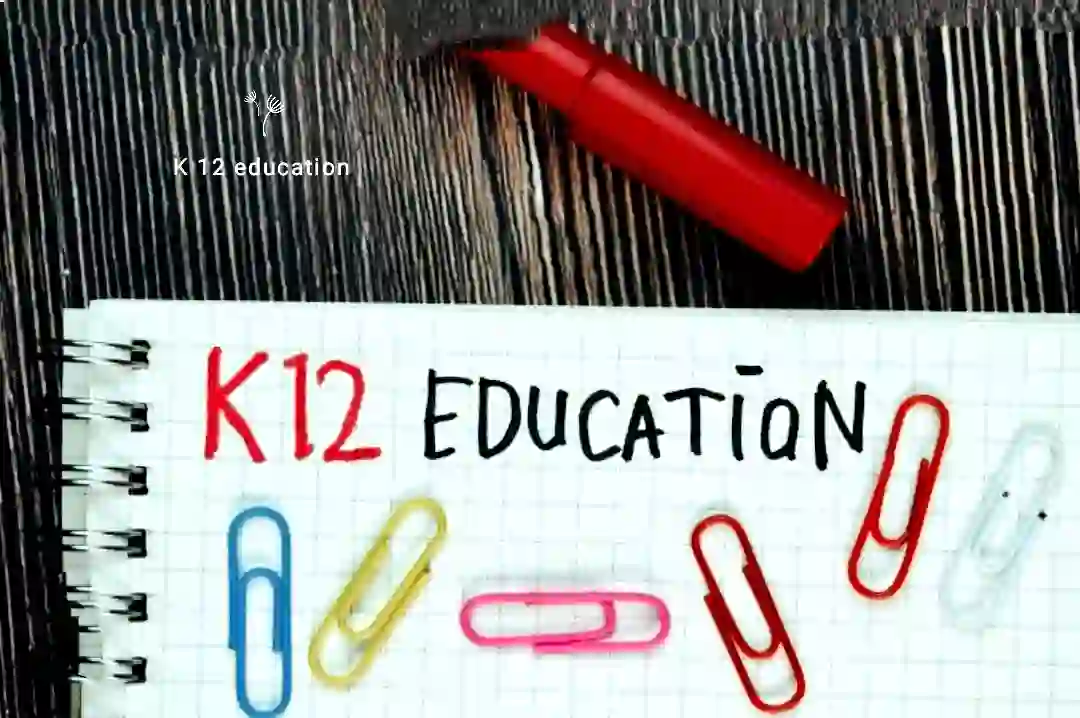The Evolution and Importance of K-12 Education: Shaping Future Generations

The Importance of K-12 Education in Shaping Future Generations
Table of Contents
K-12 education forms the foundation of a child’s academic journey, encompassing Kindergarten through 12th grade, which plays a pivotal role in shaping their intellectual, social, and emotional development. As a critical part of the educational system worldwide, K-12 education sets the stage for further academic pursuits and prepares students for future career paths and life skills. This comprehensive education model is the bedrock for personal and professional success, helping students transition from early childhood education into adulthood with the necessary skills and knowledge.
In this blog post, we will explore the evolution, structure, and significance of K-12 education in the modern world. From its historical roots to current trends and challenges, we will examine how this crucial phase of education influences students’ lives globally. Whether you’re a parent, teacher, policy maker, or simply interested in understanding the state of education today, this guide will provide valuable insights into the K-12 education system.
Section 1: Understanding K-12 Education
What is K-12 Education?
K-12 education refers to the public or private schooling system from Kindergarten (K) to the 12th grade. Depending on the region, it includes primary (elementary), secondary (middle and high school), and sometimes pre-kindergarten education. The goal of K-12 education is to provide children and adolescents with a well-rounded education, equipping them with the knowledge, skills, and competencies needed for adult life and further education.
Global Importance of K-12 Education
The K-12 education system is pivotal to society’s development. It serves as the entry point into lifelong learning and provides students with critical thinking, problem-solving, and social skills. Globally, K-12 education is viewed as a fundamental human right, with many countries ensuring access to quality education for all children.
In addition, nations’ economic prosperity is deeply tied to the quality of education provided at the K-12 level. Countries that invest in robust education systems see higher levels of innovation, productivity, and economic growth, improving the quality of life for their citizens.
Section 2: The History and Evolution of K-12 Education
Origins of K-12 Education
The K-12 education system as we know it today originated in the early 19th century. Before that, education was mostly reserved for the elite or the religious classes. However, with the rise of industrialization and the need for a more skilled workforce, governments began to recognize the need for universal education.
The U.S. education system, for example, was significantly influenced by Horace Mann, a 19th-century educational reformer who advocated for free, publicly funded schools. His vision of common schools became the foundation for K-12 education in the United States and influenced similar models in other parts of the world.
Key Milestones in K-12 Education Development
The development of K-12 education systems worldwide has undergone several transformations. From the introduction of compulsory education laws in the late 1800s to the rise of standardized testing in the 20th century, education policies have evolved to meet society’s changing needs.
For instance, the introduction of high school in the United States during the early 1900s made it possible for more students to continue their education beyond elementary school, a significant milestone in the development of modern education systems.
Section 3: Structure of K-12 Education
Grades and Educational Stages
K-12 education is typically divided into three major stages:
- Elementary (K-5): This is where children begin their formal education, typically at ages 5 to 10. The focus is on foundational subjects like reading, writing, math, science, and social studies.
- Middle School (6-8): This stage, also known as junior high in some countries, is the transition between elementary and high school. Students are introduced to more specialized subjects and start preparing for high school.
- High School (9-12): The final stage of K-12 education focuses on preparing students for higher education or entering the workforce. In addition to the core curriculum, students are often given a choice of electives and specialized courses.
The Role of Each Stage in Student Development
Each stage of K-12 education plays a critical role in a child’s overall development. Elementary school builds the foundation for basic academic skills, middle school encourages self-exploration and intellectual growth, and high school prepares students for the complexities of adulthood, whether through college, vocational training, or entering the workforce.
Section 4: The Role of K-12 Education in Shaping Young Minds
Cognitive, Emotional, and Social Development
K-12 education shapes a child’s cognitive, emotional, and social abilities. From learning to read and write to understanding abstract concepts in mathematics and science, students develop essential intellectual skills during these formative years.
Additionally, K-12 schools play a significant role in fostering emotional intelligence and social skills, helping students navigate interpersonal relationships, develop empathy, and build resilience.
The Role of Teachers in Student Development
Teachers are the cornerstone of the K-12 education system. They impart knowledge and provide mentorship, guidance, and emotional support. Effective teaching goes beyond academic instruction, ensuring that students are equipped to face life’s challenges with confidence and compassion.
Section 5: Key Components of K-12 Education
Curriculum and Standards
One of the fundamental components of K-12 education is the curriculum, which defines what students are expected to learn at each grade level. A well-designed curriculum ensures that students acquire the necessary knowledge and skills to progress through each stage of their education. National or regional education authorities often set curriculum standards, which provide a framework that guides teachers in developing lesson plans and teaching strategies.
The curriculum typically includes a broad range of subjects, such as:
- Language Arts: Reading, writing, and literacy development
- Mathematics: Arithmetic, algebra, geometry, and advanced mathematics
- Science: Biology, physics, chemistry, and earth sciences
- Social Studies: History, geography, civics, and economics
- Arts and Physical Education: Music, art, sports, and physical well-being
- Foreign Languages: Offering students the opportunity to learn additional languages
In many countries, there is also an increasing emphasis on technology, coding, and other 21st-century skills in the K-12 curriculum.
Assessment and Testing
Standardized testing is an essential part of the K-12 system to measure students’ progress and understanding of the curriculum. While tests such as the SAT, ACT, or AP exams are standard in high school, many countries have other forms of assessment at various stages, such as end-of-year exams, formative assessments, and quizzes. These tests are designed to evaluate the individual student’s mastery of subjects and the overall performance of schools and educational systems.
Assessment is not limited to exams alone. Teachers often use formative assessments (such as assignments, projects, and class participation) to gauge student understanding and adapt instruction as necessary.
Extracurricular Activities
Extracurricular activities play a crucial role in the development of students during their K-12 years. These activities allow students to explore interests beyond academics, build social skills, and develop leadership qualities. Everyday extracurricular activities include:
- Sports: Football, basketball, swimming, etc.
- Clubs: Debate, drama, music, coding, etc.
- Volunteer Programs: Community service and social responsibility initiatives
- Student Government: Leadership and organizational skills development
Participation in extracurriculars has been shown to improve students’ academic performance, increase self-esteem, and promote better mental health.
Section 6: Modern Trends in K-12 Education
Technology in the Classroom
The integration of technology into the classroom has revolutionized K-12 education. With the rise of digital tools and platforms, teaching and learning have become more interactive, flexible, and accessible. Students can now access various resources online, from digital textbooks to interactive simulations that enhance learning experiences.
Some examples of technology use in K-12 education include:
- EdTech Tools: Platforms like Google Classroom, Kahoot, and Zoom have become commonplace in classrooms worldwide, facilitating learning, collaboration, and communication between students and teachers.
- Virtual and Augmented Reality (VR/AR): These technologies create immersive learning experiences that can transport students to historical events, faraway places, or even the inside of a cell.
- Personalized Learning: Tools powered by artificial intelligence (AI) now allow customized learning experiences tailored to each student’s pace and needs.
Personalized Learning Approaches
Personalized learning has emerged as a powerful trend within the K-12 education system. This approach tailors the learning experience to meet each student’s needs, strengths, and interests. The aim is to make learning more engaging and effective by allowing students to progress at their own pace and style.
Some strategies that support personalized learning include:
- Differentiated Instruction: Teachers adjust their teaching methods and content to accommodate different learning styles.
- Learning Pathways: Students are given choices on how to pursue topics of interest within the broader curriculum.
- Competency-Based Education: Students move forward only after mastery of a concept rather than being promoted based on age or grade level.
Project-Based Learning and STEM Education
Project-based learning (PBL) is another modern approach gaining popularity in K-12 education. PBL allows students to work on real-world problems and projects, fostering critical thinking, collaboration, and creativity. It also provides an opportunity to integrate multiple disciplines, allowing students to see how knowledge from different subjects can be applied to solve complex problems.
STEM (Science, Technology, Engineering, and Mathematics) education has become increasingly emphasized as the demand for tech-savvy workers grows. In STEM classrooms, students can explore science and technology concepts through hands-on activities, experiments, and innovative projects. This approach equips students with problem-solving skills and prepares them for careers in tech-driven industries.
Section 7: Challenges Facing K-12 Education Today
The Digital Divide and Access to Technology
While technology has transformed education, a significant challenge remains the digital divide. Many students, especially in rural or low-income areas, lack access to the necessary devices and high-speed internet connections for digital learning. This disparity was particularly evident during the COVID-19 pandemic when millions of students around the world were forced to transition to remote learning, highlighting the gap between those with access to technology and those without.
Addressing this digital divide is crucial to ensuring that all students can benefit from the opportunities technology offers in the classroom. Governments and schools must work together to provide affordable devices, broadband access, and digital literacy training to ensure equity in education.
Equity and Inclusion in Education
Equity remains a significant concern in K-12 education systems worldwide. Historically, marginalized groups—such as students of color, students with disabilities, and students from low-income families—have faced educational disparities. These inequities can manifest in lower access to resources, dropout rates, and underrepresentation in higher-level courses.
Efforts to improve equity in education include implementing inclusive curricula, special education programs, and policies to reduce achievement gaps. The aim is to create a learning environment where every student can thrive regardless of their background.
Teacher Shortages and Burnout
Another challenge in K-12 education is the need for more qualified teachers and the high levels of burnout among educators. The teaching profession has faced staffing shortages, particularly in specific subjects such as STEM, special education, and language arts. Teachers often deal with large class sizes, insufficient resources, and administrative pressure, leading to stress and burnout.
Addressing teacher shortages requires improving salaries and working conditions and fostering a positive teaching environment. Programs that offer mentorship, professional development, and better support systems for teachers can help alleviate burnout and retain talented educators.
Section 8: The Role of Parents and Communities in K-12 Education
Building Strong School-Family Partnerships
Parental involvement in K-12 education is critical to student success. Research consistently shows that when parents are engaged in their children’s education, students perform better academically, have better social skills, and are more likely to graduate. Parents can support their children’s learning by participating in school activities, attending parent-teacher conferences, and volunteering for school events.
Strong school-family partnerships also provide a safety net for students, ensuring that home and school environments are supportive and conducive to learning.
Community Involvement in Education
Community support for schools is also essential. When local communities actively engage with schools, students benefit from additional resources, mentoring, and real-world connections. Community involvement can take many forms, such as local businesses offering internships, local organizations providing after-school programs, and alums returning to schools as guest speakers or mentors.
Collaboration between schools and communities ensures that students are prepared for success in the classroom and the broader world.
Section 9: The Future of K-12 Education
Emerging Educational Models and Innovations
The future of K-12 education is likely to be shaped by continuous innovation. As we look ahead, several emerging educational models may play a significant role:
- Blended Learning: Combining in-person instruction with online learning, blended models offer flexibility and individualized learning.
- Global Classrooms: Technology is breaking down geographic barriers, allowing students to collaborate with peers worldwide on joint projects and studies.
- Microlearning: Focused, bite-sized learning experiences that allow students to learn at their own pace, often in self-directed settings.
The Impact of AI and Automation on Education
Artificial intelligence (AI) and automation are expected to significantly impact education. AI can help personalize learning, automate administrative tasks, and provide real-time feedback to students. Additionally, AI-powered tools can assist teachers in identifying struggling students and offering tailored support.
While automation may reduce some administrative burdens, it is essential to strike a balance, ensuring that the human touch in education is not lost. Teachers preserved the cornerstone of the learning experience, with AI serving as a complement to their work rather than a replacement.
Best states for education k-12
When considering the best states for K-12 education in the United States, several factors include academic performance, school funding, access to resources, teacher quality, student safety, and overall educational outcomes. Based on various rankings, studies, and reports from organizations like U.S. News & World Report, Niche, and the National Center for Education Statistics (NCES), here’s a detailed overview of some of the top states for K-12 education:
Massachusetts
- Overall Education Quality: Massachusetts is frequently ranked as the top state for K-12 education in the U.S. It consistently excels in standardized test scores and graduation rates. The state has a robust public education system, focusing on rigorous curricula and high student expectations.
- Academic Performance: Massachusetts students often perform at or near the top in national assessments like the National Assessment of Educational Progress (NAEP), particularly in math, reading, and science.
- Teacher Quality: Massachusetts teachers are among the most highly qualified, with high standards for certification and continued professional development.
- Public School Funding: The state invests heavily in education and provides significant funding for public schools.
New Jersey
- Academic Performance: New Jersey has some of the highest test scores in the country, particularly in reading and math. It consistently ranks highly in state assessments and has one of the nation’s highest high school graduation rates.
- Equity in Education: New Jersey is known for its efforts to reduce educational disparities. The state invests in high-needs districts and provides additional resources to schools that serve low-income and minority students.
- Teacher Pay & Quality: New Jersey teachers are well-compensated, and the state has rigorous teacher preparation and professional development programs.
Connecticut
- Academic Performance: Connecticut consistently ranks among the top states for academic performance in reading, math, and science subjects.
- Graduation Rates: The state has one of the highest high school graduation rates in the country, with a focus on preparing students for college and careers.
- Special Education: Connecticut strongly supports students with disabilities, and many schools offer specialized programs to meet their needs.
- Investing in Education: Connecticut is known for its high funding of public education, which translates into better resources, facilities, and support services.
Virginia
- Educational Performance: Virginia ranks well in academic outcomes and overall school quality. It has some of the best public schools in the country, particularly in the northern part of the state (close to Washington, D.C.).
- Standardized Testing: Virginia students consistently perform well on standardized tests, such as the SOL (Standards of Learning) exams.
- College Readiness: Virginia is known for its emphasis on preparing students for post-secondary education. The state has a strong network of public colleges and universities, and many high schools offer advanced placement (AP) courses to prepare students for college-level work.
- Equity: Virginia has made strides in increasing funding for disadvantaged schools, though work remains to address disparities between wealthy and low-income districts.
Minnesota
- Top Rankings: Minnesota is consistently ranked among the best educational states due to its strong academic performance, particularly in math and reading.
- Graduation Rates & College Readiness: Minnesota has high graduation rates, and many students are well-prepared for college and the workforce. The state also offers a variety of programs to support students’ career and technical education.
- Teacher Excellence: Minnesota invests in teacher training and professional development, ensuring that educators are highly skilled.
- Inclusive Education: Minnesota has a strong track record of addressing the needs of diverse student populations, including English language learners and students with disabilities.
New Hampshire
- Educational Excellence: New Hampshire is one of the top performers in national rankings for K-12 education. The state has high academic achievement in reading, math, and science and a high rate of college readiness.
- Personalized Learning: Many New Hampshire schools are known for their innovative approach to personalized learning, which allows students to progress at their own pace and focus on areas for improvement.
- High Graduation Rates: New Hampshire has one of the highest graduation rates in the U.S., and its students perform well on standardized assessments.
- School Safety & Support: The state highly emphasizes student well-being and mental health, offering strong support systems in schools.
Wisconsin
- Strong Public Schools: Wisconsin has a well-regarded public school system with excellent math, science, and reading performance.
- College Readiness: The state offers many opportunities for students to prepare for college, including Advanced Placement courses, dual enrollment programs, and career readiness initiatives.
- High School Graduation: Wisconsin boasts a high graduation rate, and students generally perform well in post-secondary pursuits.
- School Funding: Despite some district disparities, Wisconsin’s public schools are generally well-funded, and the state invests in education.
Iowa
- National Recognition: Iowa frequently ranks near the top in national assessments and is known for its emphasis on a well-rounded education.
- Teacher Quality: Iowa has a strong tradition of preparing high-quality teachers and providing ongoing professional development opportunities.
- Equity and Access: Iowa significantly focuses on reducing educational disparities, with investments aimed at ensuring all students have access to high-quality educational opportunities.
- Student Engagement: The state has a high level of student engagement, with many schools offering extracurricular activities that help students develop leadership, teamwork, and problem-solving skills.
Nebraska
- Academic Performance: Nebraska students perform well on national assessments, especially in math and reading. The state has a strong reputation for educational excellence.
- High School Graduation: Nebraska’s graduation rate is above the national average, and the state emphasizes preparing students for higher education or careers.
- Personalized Learning: Many schools in Nebraska use innovative approaches to learning, focusing on customized education and allowing students to explore their interests.
- Community Engagement: Nebraska schools are known for strong community involvement, which enhances educational opportunities and provides students with support outside the classroom.
Colorado
- Educational Quality: Colorado is recognized for its strong education system, which performs particularly well in areas like college readiness and high school graduation rates.
- Innovative Programs: The state has embraced new educational models, including charter schools and online learning options, to meet the diverse needs of students.
- Teacher Support: Colorado has a solid teacher preparation program and robust professional development opportunities for educators.
- Focus on Wellness: Many schools in Colorado focus on student well-being, including mental health support, which contributes to a positive learning environment.
Other Notable Mentions:
- Maryland is known for its strong academic performance and high graduation rates. It’s often ranked highly in science and math.
- Rhode Island: High graduation rates and strong academic outcomes, particularly in English and science.
- Ohio: High graduation rates and an emphasis on college preparation and career readiness.
Key Factors to Consider:
When looking at the best states for K-12 education, it’s essential to look at several factors:
- Academic Achievement: Test scores, graduation rates, and college readiness are critical indicators of educational quality.
- Equity: States that strongly focus on addressing achievement gaps between different socioeconomic groups tend to offer better opportunities for all students.
- Teacher Quality: Well-trained and supported teachers are vital for student success.
- Resources and Funding: Adequate funding ensures schools have the resources for high-quality education, including extracurricular activities and support services.
Ultimately, the best state for K-12 education depends on individual needs, including the level of support for special education, opportunities for gifted students, and available extracurricular programs.
Conclusion
The Importance of Strengthening K-12 Education Globally
K-12 education is the foundation upon which the future of every nation is built. It shapes the minds of future leaders, workers, innovators, and citizens. The importance of K-12 education cannot be overstated, as it contributes to individual success, societal progress, and economic growth.
As the world continues to evolve, K-12 education must adapt to meet the challenges and opportunities of the 21st century. By embracing technology, focusing on equity, and fostering strong partnerships between schools, families, and communities, we can ensure that every student has the opportunity to thrive.
Through collaboration, innovation, and a shared commitment to educational excellence, we can continue to build an education system that supports all learners and prepares them for a bright future.
>> Things to know before going abroad for studies after Hsc.
>> Education Service Center Region 13 Jobs: Start Your Education Career Now



